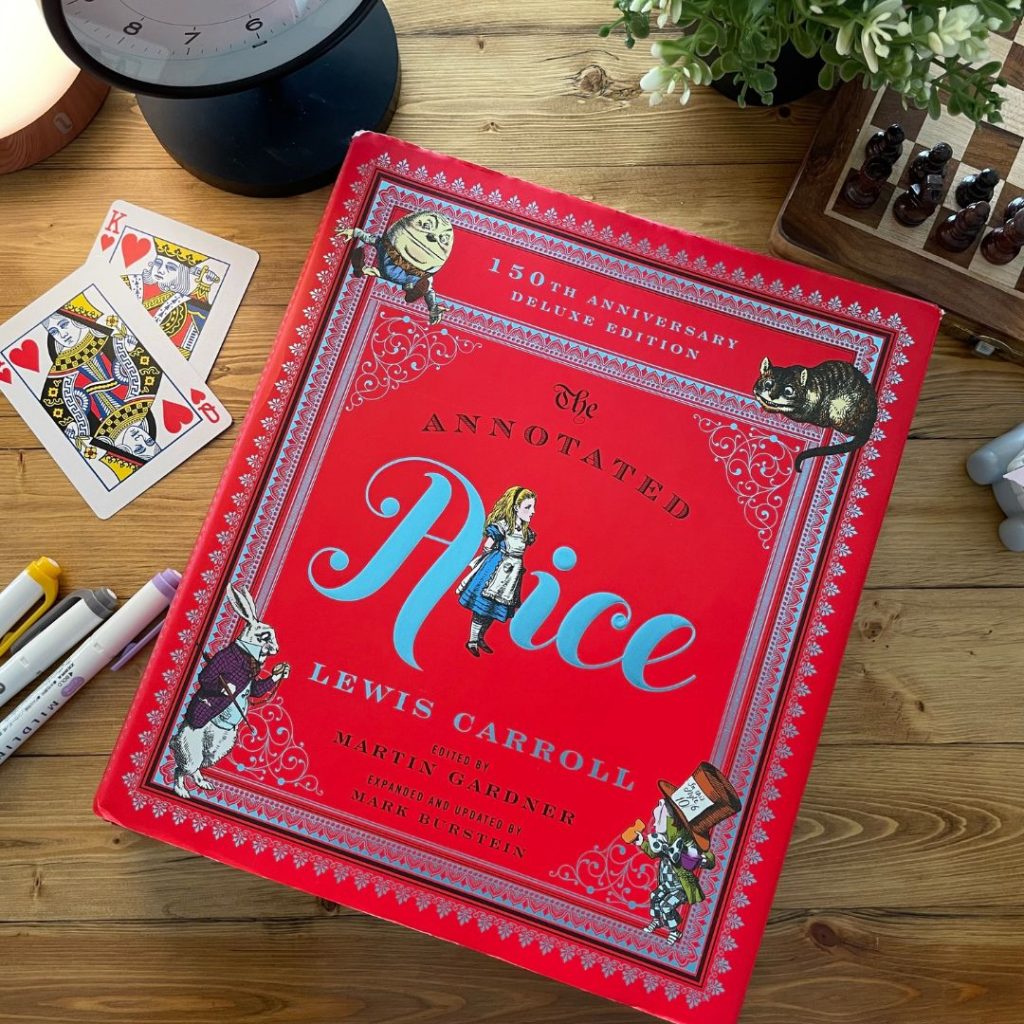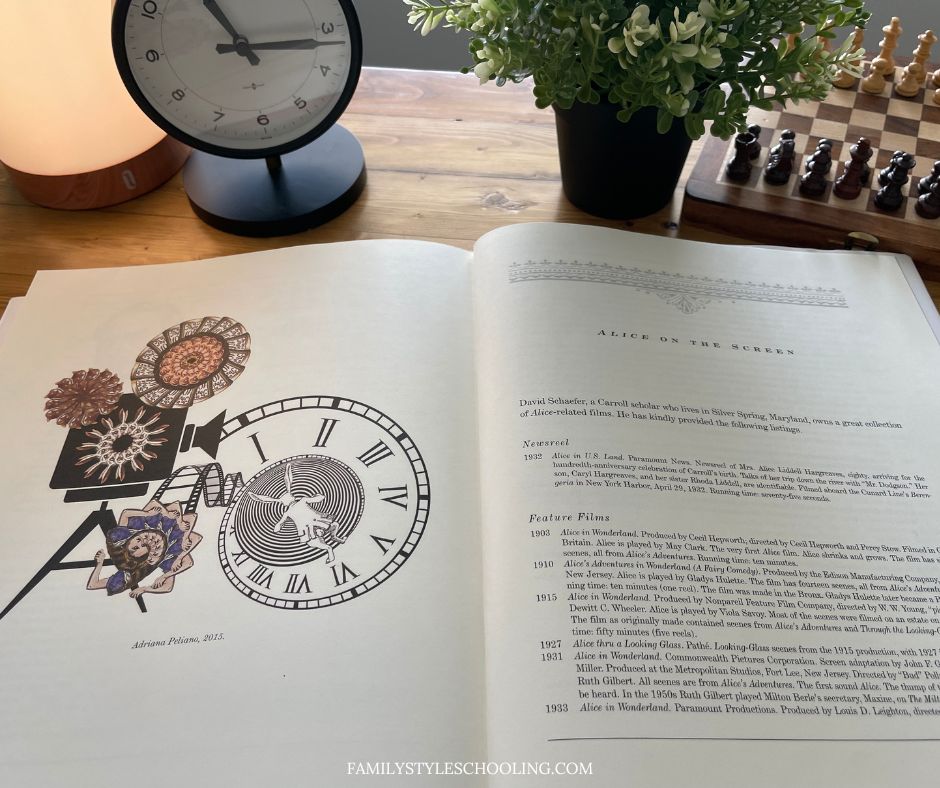The Annotated Alice by Lewis Carroll
I’m currently reading Lewis Carrol’s Alice in Wonderland, and it is a treasure trove of plays with language. One of my favorite moments comes from the third chapter, in which Alice finds herself among a group of very political animals washed up on an island. Cold and wet, the Mouse tries to solve the problem by telling the group the driest thing he knows! So he begins to recite Havilland Chepmell’s Short Course of History. As dry as it is, it unfortunately doesn’t dryany of them off. The Mouse recites, “Stigand, the patriotic archbishop of Canterbury, found it advisable to go with Edgar. . .” Then a poor, confused Duck interrupts. Watch for the linguistic pun Carrol plays on!

“Found what?” said the Duck. “Found it,” the Mouse replied rather crossly: “of course you know what ‘it’ means.”
“I know what ‘it’ means well enough, when I find a thing,” said the Duck: “it’s generally a frog, or a worm. The question is, what did the archbishop find?”
Carroll is playing on a tricky linguistic phenomena . . . the “it” in this sentence serves no purpose grammatically. What did the archbishop find? Nothing, really. “It” is a filler word that we use in English to help us arrange sentences in unique ways, but it doesn’t add anything to the sentence. A simpler example might be “There was a farmer in the field.” Where is ‘there’? ‘There’ doesn’t give us any new information! You could say just as easily, “A farmer was in the field.”
It’s very fun to think about these plays on words. The English language is a beautiful world, but it’s one that is just as magical as the Wonderland Alice finds herself in, and one that we will be continually exploring!
[book-info]

The deluxe anniversary edition of The Annotated Alice includes:
- A rare, never-before-published portrait of Francis Jane Lutwidge, Lewis Carroll's mother
- Over 100 new or updated annotations, collected since the publication of Martin Gardner's Definitive Edition of The Annotated Alice in 1999
- More than 100 new illustrations, in vibrant color, by Salvador Dalí, Beatrix Potter, Ralph Steadman, and 42 other artists and illustrators, in addition to the original artwork by Sir John Tenniel
- A preface by Mark Burstein, president emeritus of the Lewis Carroll Society of North America, and all of Gardner's introductions to other editions
- A filmography of every Alice-related film by Carroll scholar David Schaefer

225 color and black-and-white illustrations
Hi, I’m Andy! I am an Ouachita Baptist University grad who writes stories, teaches languages, and makes music in between. The puzzle and mystery of languages fascinate me and inspire me to dig deeper in my studies. I love to learn and experience God’s creation and share what I have found with others.

